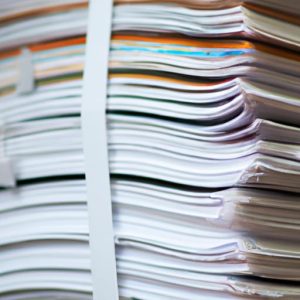Introduction
Have you ever wondered if it’s illegal to write on money? It’s a common curiosity that sparks our interest. After all, we often come across bills or coins with scribbles, doodles, or even messages. But what does the law say about it? Let’s delve into the legality of writing on money and why it’s essential to understand the consequences.
Definition of Writing on Money
Writing on money refers to any act of marking or inscribing on currency notes or coins. This can include anything from simple signatures and dates to elaborate artwork or messages. It’s a way for people to leave their mark on a tangible representation of wealth and exchange.
General Perception and Curiosity
You’re not alone if you’ve ever wondered about the legality of writing on money. Many people find themselves pondering whether it’s a harmless act or a punishable offense. It’s natural to have this curiosity, considering the prevalence of written marks on currency.
Importance of Understanding the Legality
Understanding the legality of writing on money is crucial to avoid potential consequences. While it may seem like a trivial act, it’s essential to be aware of the potential legal implications. Without proper knowledge, you might unknowingly find yourself on the wrong side of the law.
Remember, this is just the beginning. Stay tuned for the next section where we’ll explore the historical perspective on writing on money. Understanding the origins and cultural significance can shed light on the current laws and regulations. So, let’s dive deeper into the fascinating world of writing on money and its historical context.
Historical Perspective on Writing on Money
Brief Overview of Historical Instances
Throughout history, writing on money has been a common practice in various civilizations. Ancient societies, such as the Romans, Greeks, and Egyptians, often marked their coins with symbols, inscriptions, or portraits of leaders. These engravings served multiple purposes, including identification, authentication, and propaganda.
Evolution of Laws and Regulations
As societies evolved and centralized governments emerged, laws and regulations surrounding writing on money began to take shape. In many cases, these laws aimed to protect the integrity and value of currency. Governments recognized the potential for counterfeiting and the need to maintain public trust in their monetary systems.
Over time, restrictions on writing on money became more prevalent. Governments implemented laws that prohibited or limited any alterations to currency. These regulations sought to preserve the uniformity and standardization of money, preventing unauthorized modifications that could undermine its value.
Cultural Significance
Writing on money holds cultural significance in certain societies. In some cultures, it is a common practice to mark bills or coins as a way of expressing personal beliefs, cultural identity, or even as a form of art. These inscriptions can represent a sense of ownership, pride, or identification with a specific community or cause.
In addition, historical or commemorative engravings on currency can serve as a reflection of a nation’s history, values, or significant events. They symbolize the collective memory and cultural heritage of a society.
Stay tuned for the next section, where we’ll delve into the legal considerations surrounding writing on money. Understanding the legal framework is essential to navigate the potential consequences of this practice. So, let’s unravel the legal aspects together!
Legal Considerations
When it comes to writing on money, there are various legal considerations to keep in mind. Understanding the legal framework surrounding this act can help us navigate the potential consequences. Let’s delve into the key aspects of the legality of writing on money.
Explanation of the Legal Framework
The legal framework governing writing on money varies from country to country. While it may be tempting to assume that the act is universally prohibited, the reality is more nuanced. In some jurisdictions, writing on money is explicitly prohibited, while in others, the laws are less clear-cut. It’s important to explore the specific regulations in your jurisdiction to ensure compliance.
Examination of Specific Laws and Regulations
To gain a comprehensive understanding, it’s crucial to examine the specific laws and regulations regarding writing on money in different countries. For example, in the United States, defacing currency with the intent to render it unfit for circulation is prohibited under the Title 18, Section 333 of the U.S. Code. However, there are exceptions for certain artistic or educational purposes. In contrast, other countries may have stricter or more lenient regulations.
Analysis of Potential Legal Repercussions
Engaging in the act of writing on money without considering the potential legal repercussions can have serious consequences. While some might view it as a harmless act of self-expression, authorities may interpret it differently. Offenses related to defacing or altering currency can lead to penalties, fines, or even imprisonment, depending on the jurisdiction and severity of the act.
It’s essential to be aware of the potential legal ramifications before indulging in writing on money. Ignorance of the law is not a valid defense, so taking the time to understand the legal landscape can help individuals make informed decisions.
Stay tuned for the next section, where we will explore the arguments against writing on money. By understanding the concerns raised by opponents, we can gain a more holistic perspective on the matter. Let’s continue this intriguing journey together.
Arguments against Writing on Money
A. Preservation of Currency Integrity and Longevity
When it comes to writing on money, one of the primary arguments against it revolves around preserving the integrity and longevity of currency. Currency notes and coins are designed to withstand wear and tear during circulation, and any additional markings can potentially compromise their durability. By refraining from writing on money, we ensure that it remains in good condition, allowing for continued use and circulation.
B. Counterfeiting Concerns and Potential Impact on the Economy
Counterfeiting is a significant concern for governments and financial institutions. Writing on money can make it easier for counterfeiters to alter or manipulate bills, leading to an increase in fraudulent activities. Additionally, markings on currency can obscure vital security features, making it difficult for individuals and businesses to differentiate between genuine and counterfeit money. This poses a threat to the economy, as counterfeit currency can devalue the legitimate currency and disrupt financial systems.
C. Cultural and Historical Value of Money as a Symbol of a Nation
Money serves as a symbol of a nation’s identity and history. Currency often features iconic figures, landmarks, or historical events that represent a country’s heritage and values. By writing on money, we risk defacing these symbols, diminishing their cultural and historical significance. Preserving the integrity of currency allows us to appreciate and respect the national identity that it embodies.
As we’ve explored the arguments against writing on money, it’s important to consider the potential consequences and the various perspectives surrounding this practice. In the next section, we’ll delve into the arguments in favor of writing on money, examining the freedom of expression and personalization aspects. Stay tuned to discover the other side of this ongoing debate.
Arguments for Writing on Money
A. Freedom of Speech and Expression Arguments
When it comes to writing on money, advocates argue that it falls under the umbrella of freedom of speech and expression. They assert that individuals should have the right to express themselves, even on currency. Writing on money can be seen as a form of personal expression or a way to make a statement about social or political issues. By allowing people to write on money, society creates a space for diverse voices to be heard, fostering a sense of democratic participation.
B. Personalization and Artistic Value
Another argument in favor of writing on money is the idea of personalization and artistic value. Currency represents a symbol of a nation, but by allowing individuals to leave their mark, it becomes a unique expression of personal identity. Some argue that writing on money transforms it into a piece of art, adding value beyond its monetary worth. It allows people to engage with currency on a more personal and emotional level, turning it into a canvas for creativity and individuality.
C. Counterarguments to Preservation and Counterfeiting Concerns
While preservation and counterfeiting concerns are often cited as reasons against writing on money, proponents of writing on money present counterarguments. They argue that modest, non-destructive markings do not significantly impact the preservation of currency or increase the risk of counterfeiting. Moreover, advances in technology have made it easier to detect counterfeit bills, mitigating the potential risks associated with writing on money. They believe that the benefits of personal expression and artistic value outweigh the minimal impact on preservation and counterfeiting efforts.
As we conclude this section, it’s important to remember that these arguments are part of a larger debate surrounding the legality and social acceptance of writing on money. In the next section, we will provide a comprehensive conclusion to summarize the key points discussed throughout this article. So, stay tuned to gain a holistic understanding of the topic at hand.
Conclusion
In conclusion, the act of writing on money proves to be an intriguing subject with various perspectives. Understanding the legality surrounding this practice is essential to prevent potential consequences.
Throughout history, writing on money has been both common and culturally significant in different societies. However, laws and regulations have evolved to protect currency integrity and combat counterfeiting concerns. Preservation of the nation’s symbols and the economy’s stability play a significant role in these regulations.
Arguments against writing on money emphasize the importance of currency longevity, the potential impact on the economy, and the cultural and historical value attached to money. These concerns highlight the need for regulations and discourage altering the physical properties of currency.
On the other hand, arguments for writing on money revolve around freedom of speech and expression, personalization, and artistic value. Advocates argue that writing on money can be a form of self-expression and a unique way to leave a mark on a universally recognized medium.
As individuals, it is crucial to be aware of the legal framework governing writing on money, as laws can differ between countries. By understanding the potential legal repercussions, we can make informed choices regarding our actions.
In the end, the question of whether writing on money is illegal may not have a straightforward answer. It is a complex subject influenced by cultural, legal, and economic factors. As our society evolves, so may the laws and regulations surrounding this practice.
Remember, when it comes to writing on money, seek knowledge and consider the potential consequences. Let’s appreciate the value of currency, both as an exchange medium and as a symbol of our society.





